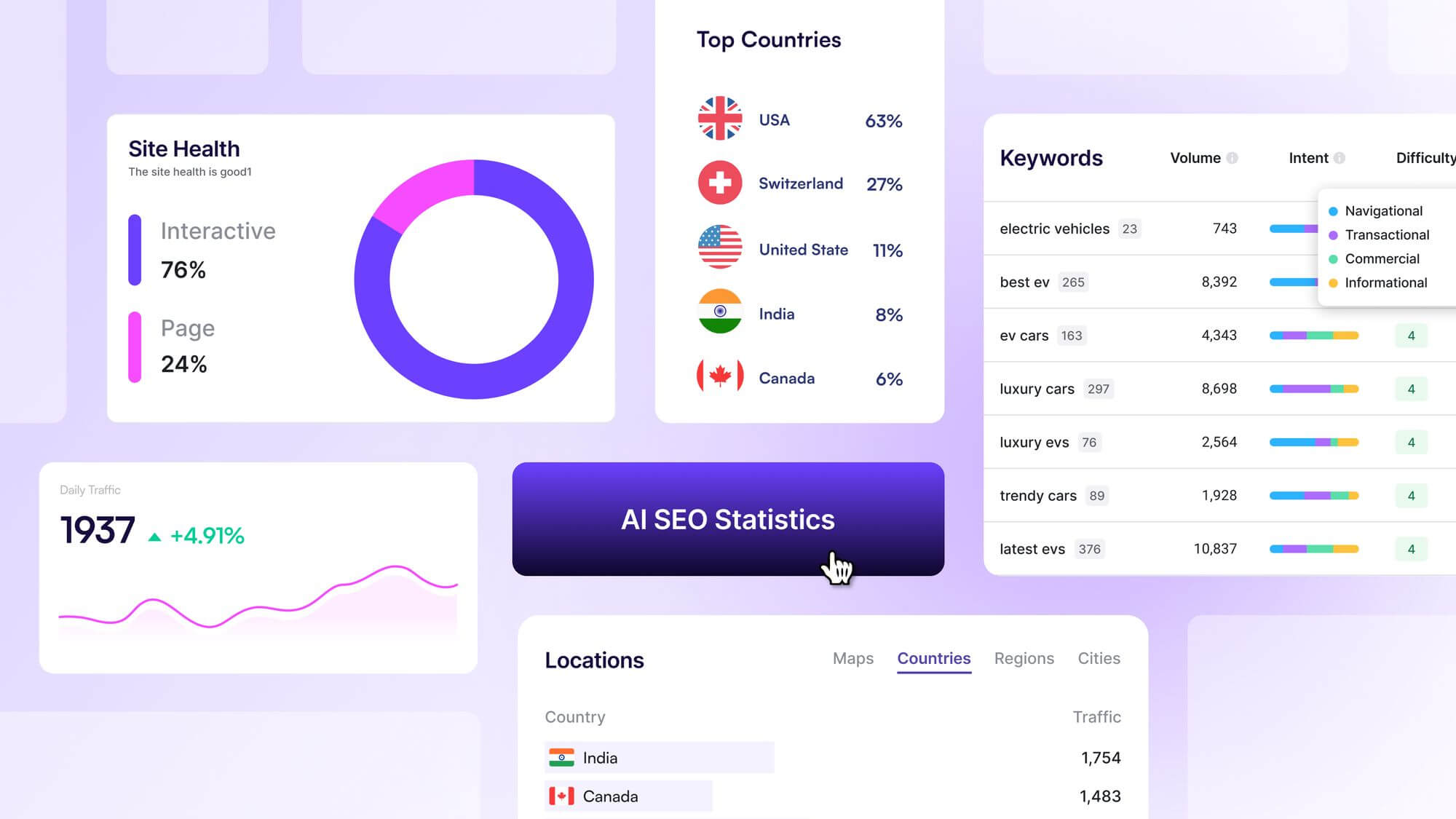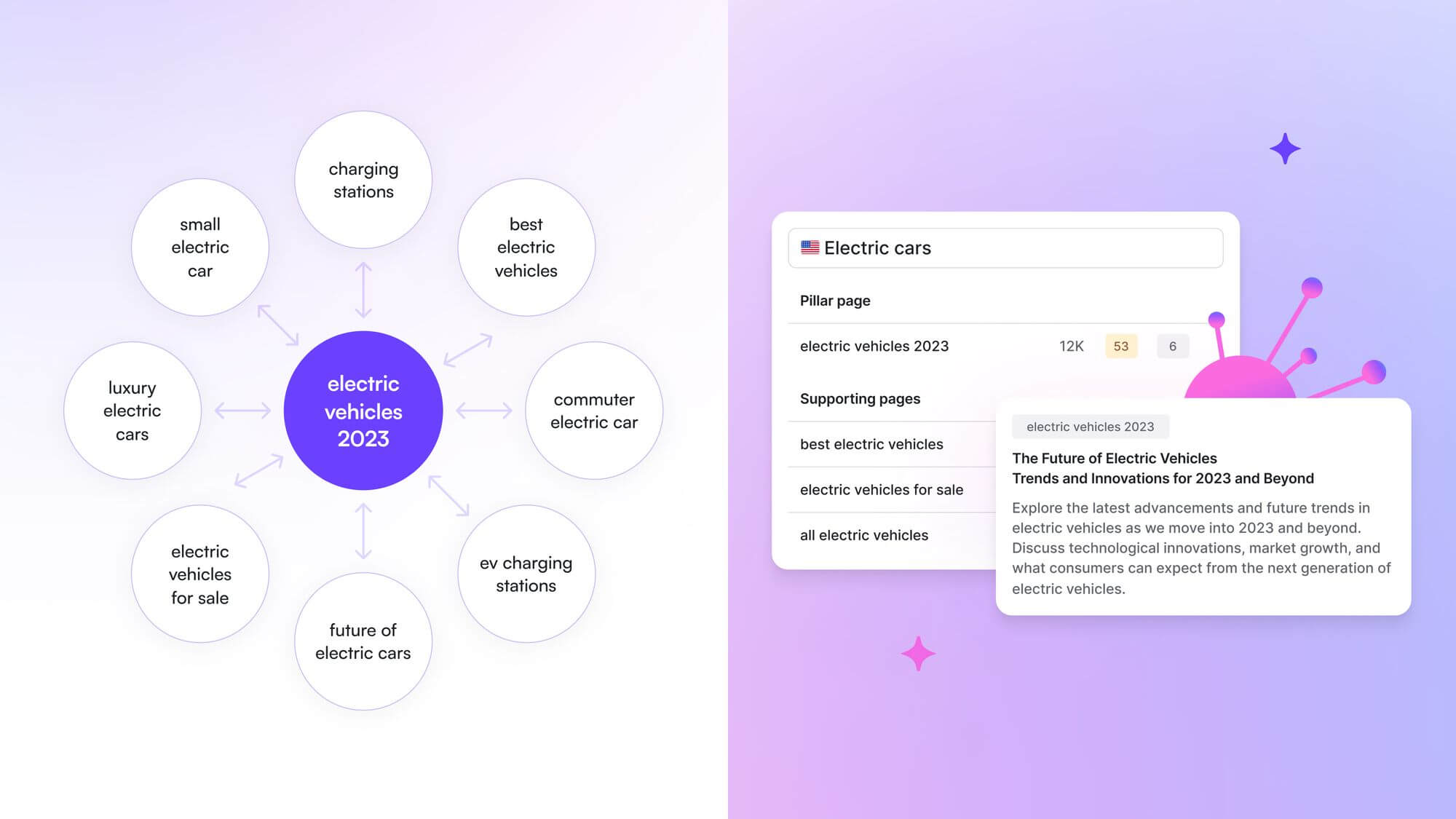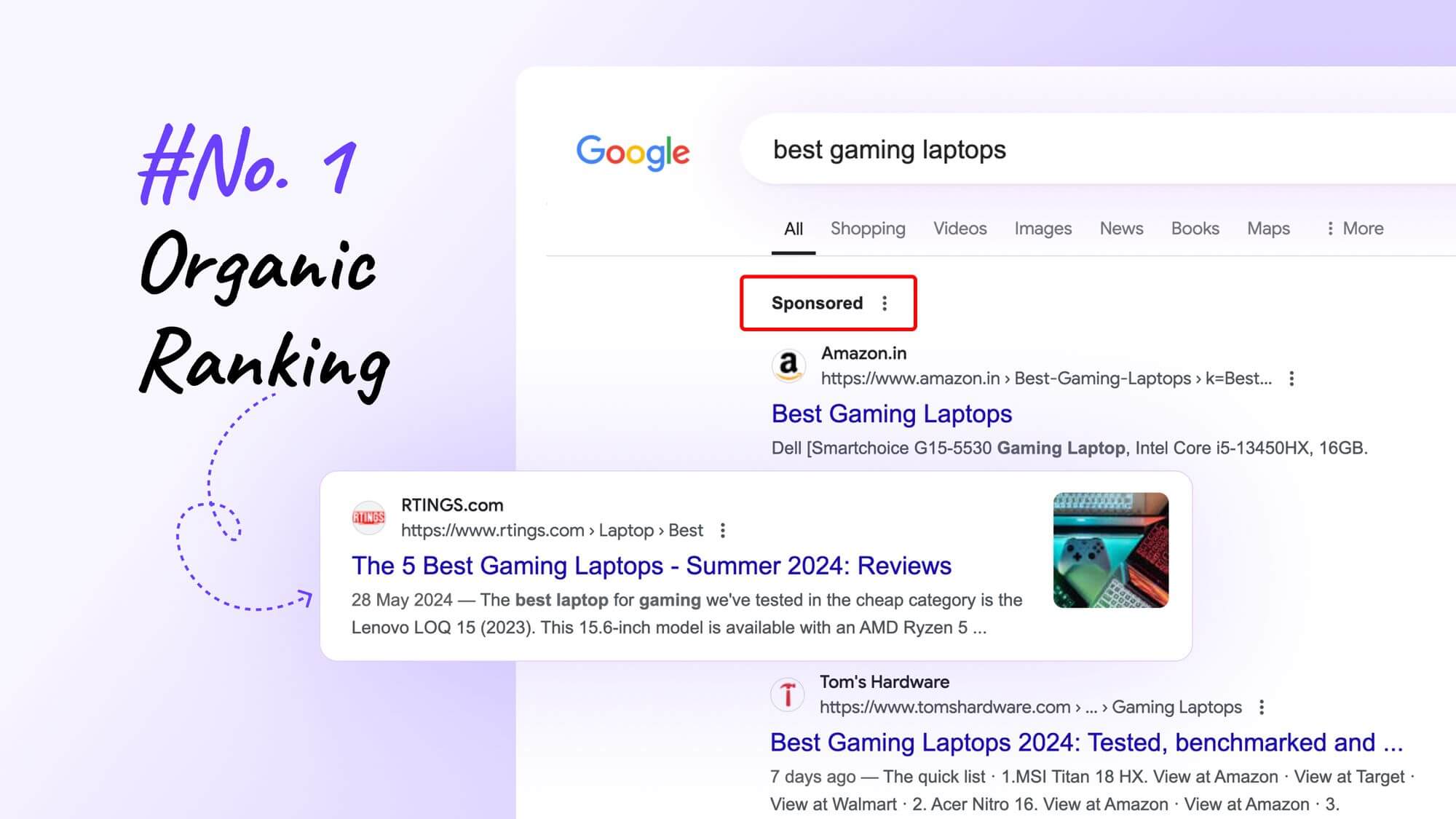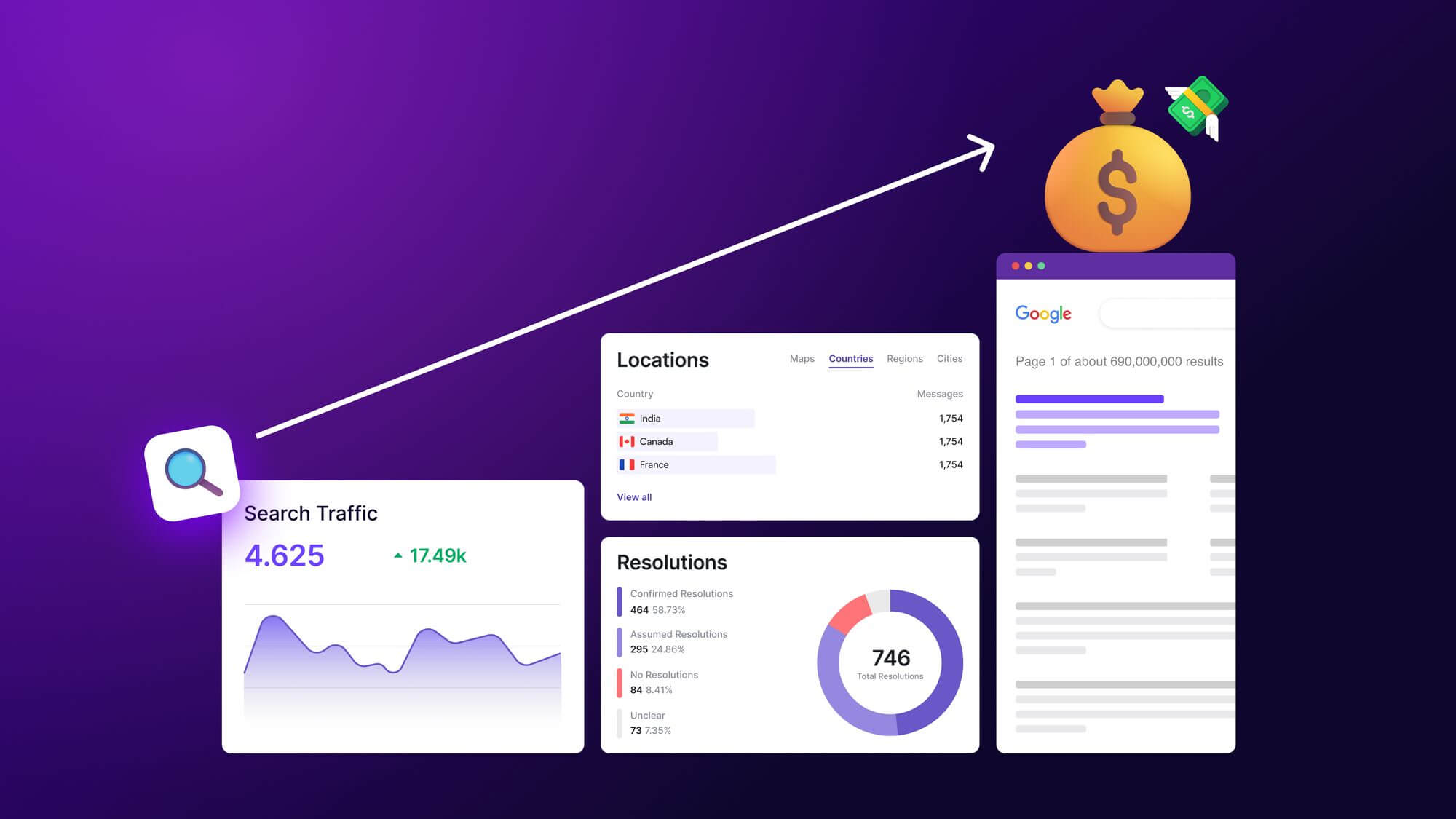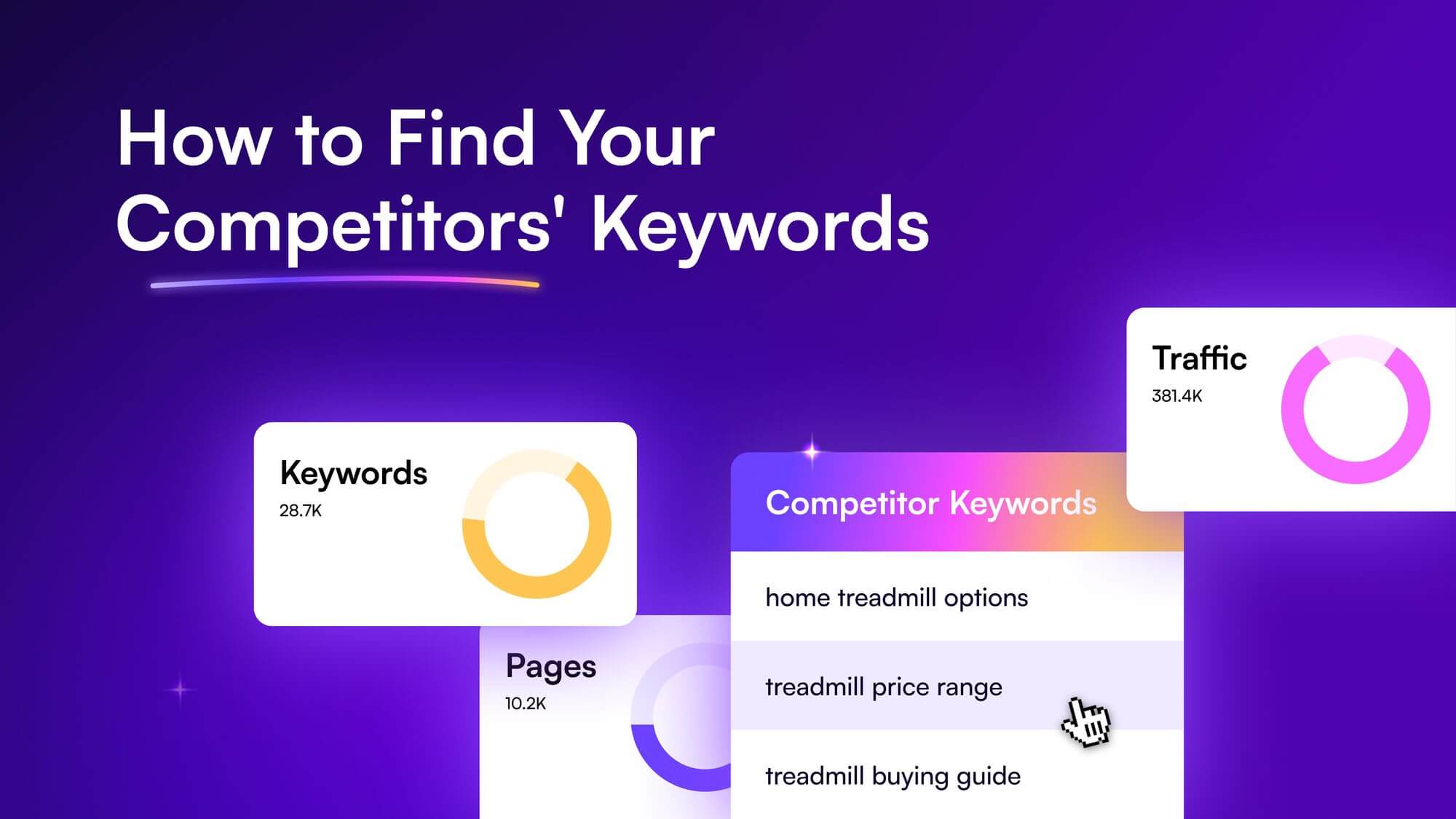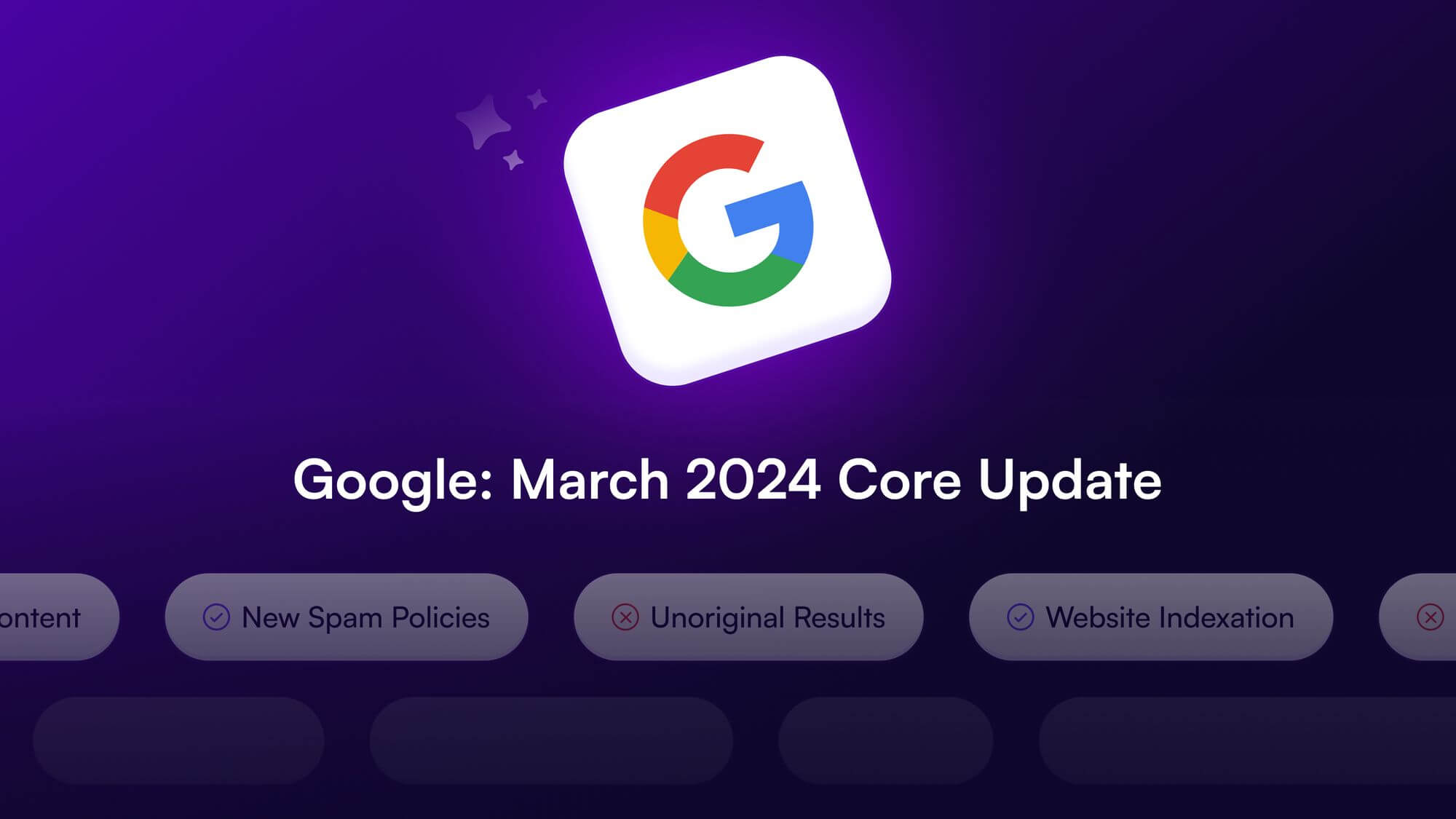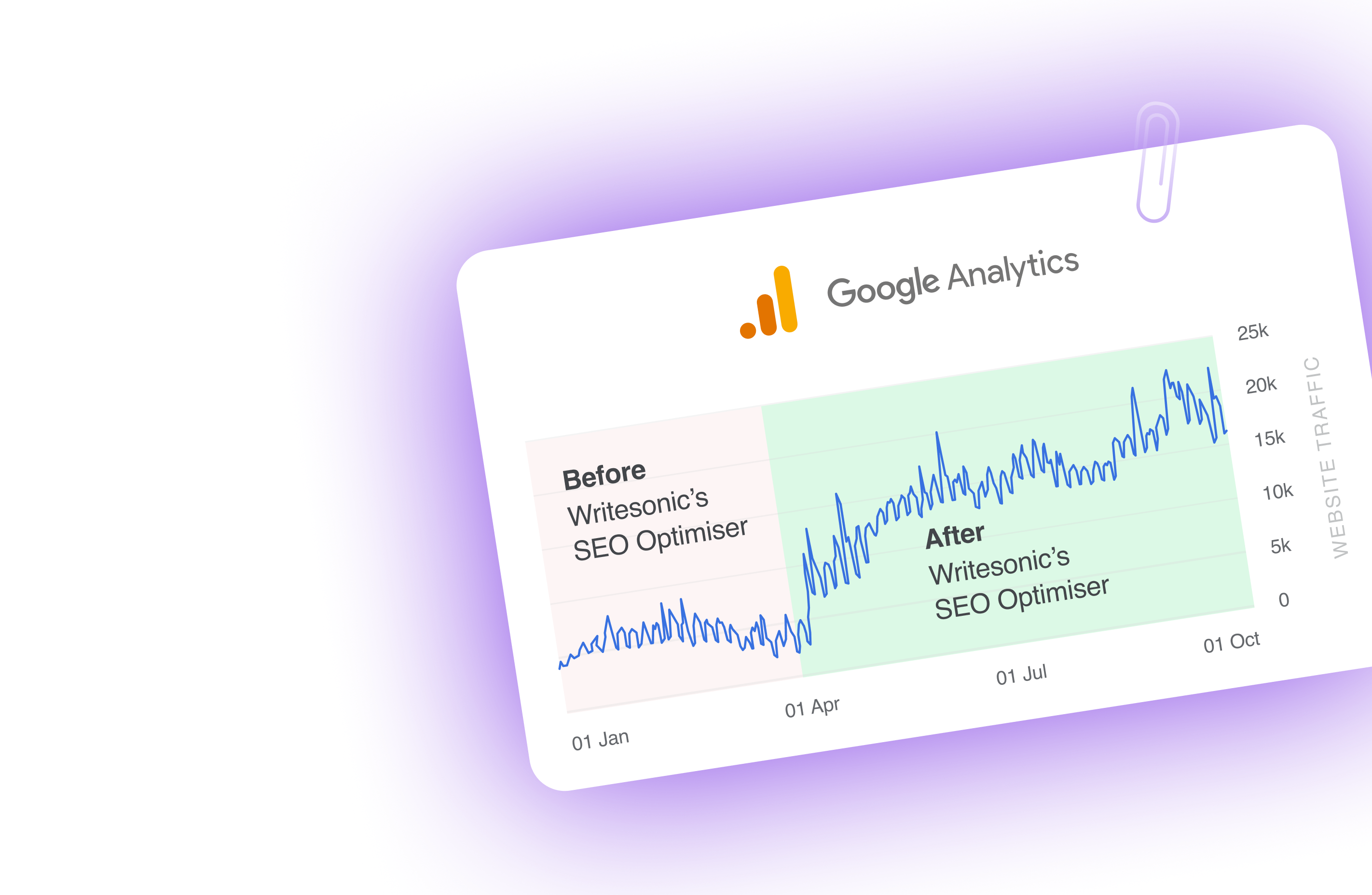“I want my content to rank”…this is probably one phrase everyone in the content industry has heard or used before.
Let’s face it.
If you’re creating content, especially for a business, you’re not doing it just because you love writing. You’re doing it to rank in search results, generate organic traffic, and get more profits.
And a big part of doing that? It’s to know how to optimize content for search engines. Mainly, how many SEO keywords per page to use and where to place them. But how do you determine that?
This article will answer all your questions. But first, let’s understand what SEO keywords are.
TL;DR
Use one to four SEO keywords per page to properly optimize it for a given topic. Make sure the keywords are placed naturally and avoid keyword stuffing. Also focus on primary, secondary, LSI, and long-tail keywords.
What are SEO keywords?
SEO keywords are specific words or phrases that people use in search engines when looking for information, products, or services online. They’re an important part of SEO content writing strategies, acting as guides between your content and what people search online.
Say someone wants to learn to play guitar. They’ll search “best guitar lessons,” which is an SEO keyword.
If you run guitar classes and have well-optimized content on your website, chances are, it will show up in search results for this keyword.
And to produce such well-optimized content, you need to learn about primary and secondary keywords.
Primary keyword vs. secondary keyword vs. tertiary keywords
Primary keywords are the main keywords for which you optimize the content. These are the focus words repeated multiple times throughout an article to convey its core idea.
“Marketing,” “workout,” and “camping” are some examples of primary keywords.
Think of primary keywords as the “star” of the show. There might be other attractions, but you focus only on the star.
Secondary keywords are keywords that are closely related to the primary keyword. They can be similar in context, convey additional ideas, or just be variations of the core phrase. Secondary keywords are the “other attractions.” They may not steal the show but are equally important to keep people engaged.
Good examples of secondary keywords would be “digital marketing,” “workout ideas at home,” or “best camping places.”
Want to learn more about primary and secondary keywords? Here’s a more detailed guide about SEO.
Now, there is another type of keywords called tertiary keywords or latent semantic indexing (LSI) keywords. These keywords are closely related to the primary and secondary keywords and can be their variations, synonyms, or conceptually related terms. Tertiary or LSI keywords should be used sparingly to help search engines understand the context and depth of your content.
There are also long-tail keywords — detailed phrases and questions that have lower search volume but are still relevant to the main topic. These should be ideally covered at least once in the entire article.
How many SEO keywords per page should you use?
As a rule of thumb, you should use around one to four SEO keywords per page, relating to the same topic. That’s around one to two keywords every 100-150 words or a keyword density of 0.5% to 2% and includes one primary keyword and other secondary keywords.
What is keyword density?
Keyword density is the frequency of a specific keyword or phrase within a piece of content, typically expressed as a percentage. It’s calculated by dividing the number of times a keyword appears in the text by the total number of words and then multiplying it by 100.
However, the number of SEO keywords also depends on the type of content you are writing. Say you’re writing a product description. The number of words is low. That means you need to add a large number of keywords, almost 5-10 per page, to rank. This isn’t typical for blog articles, where the number of keywords per page is just one to four.
Here’s a quick glance at how many SEO keywords per page for each content type:
| Content Type | Recommended Number of Keywords |
| Blog Post | 1 primary, 2-4 secondary |
| Product Page | 1 primary, 3-5 secondary |
| Homepage | 1 primary, 2-3 secondary |
| Category Page | 1 primary, 5-10 secondary |
| Landing Page | 1 primary, 1-2 secondary |
| About Us Page | 1 primary, 2-3 secondary |
| Service Page | 1 primary, 3-5 secondary |
| FAQ Page | 1 primary, 5-10 secondary |
| News Article | 1 primary, 2-3 secondary |
| Video Page | 1 primary, 3-5 secondary |
Now that you know how many SEO keywords per page to use, here’s some advice:
Use only one primary keyword per article
Every primary keyword conveys one distinct idea. Use just one primary keyword in an entire article to make sure you stick to that idea throughout.
But you can, and should, use it multiple times. As a good practice, use the primary keyword two to three times every 500 words for SEO. You can use additional secondary keywords to cover supporting topics and maintain the “one to four keywords per page” range.
Why do we suggest one keyword per article? Here’s why:
Why NOT to use more than one primary keyword
Because it’s neither necessary nor practical to use multiple primary keywords in a single article, both from an SEO and a reader’s perspective.
Imagine this. You ask a bookstore for books on geography. But the store owner keeps trying to give you books on tailoring and math as well — even if you don’t want them. It’s safe to say, you’re not returning to that store again.
That’s exactly how readers feel when reading articles with multiple primary keywords. When people search for a query, they’re looking for that particular information and nothing else. As an SEO professional, your job is to make it as easy as possible for readers to find that information.
Complicating this by including multiple primary keywords will only frustrate them and probably drive them away. That’s the reader’s perspective.
Now, coming to the SEO perspective. It’s simply not necessary to use more than one keyword. If it’s a closely related topic, the secondary keywords will cover it. If it’s an unrelated topic, it doesn’t belong in the article.
And, the best part: if you optimize an article for one primary keyword, the article will automatically rank for other similar keywords as well.
Check this article we wrote on “prompt for ChatGPT.” For the given primary keyword, it’s in the first position in SERPs.
And, it’s ranking for another 3,470 other keywords as well. Even if we optimized it for only one keyword!
So, bottom line, one primary keyword is enough. The remaining topics can be covered by secondary keywords.
How do you research these keywords? Let’s explore that.
How to find primary and secondary keywords
You know how many SEO keywords per page you need to use. But in order to use them, and get the best SEO results, you need to find the right keywords.
Say you run an online fashion business and want to write about “winter fashion.” You can’t just write a blog on that term. Instead, you need to know what exactly people search for when looking for winter fashion and what related information they want, in order to rank.
Now, this information is almost impossible to find manually. So what’s the best way to find primary and secondary keywords?
Use a keyword research tool
Using a tool, like Writesonic’s Keyword Researcher, is the easiest and most reliable way of finding primary and secondary keywords.
Let’s continue with the same example as above and choose “winter fashion” as the seed keyword i.e. the broad topic idea that you want keywords for.
Enter this “seed keyword” in Writesonic’s Keyword Researcher, click on “Identify Keywords”, and…
…it gives you a complete overview of the keyword, with its search volume and difficulty.
If you scroll down, you can also see a list of keywords under different tabs called “Same terms,” “Related,” “Also rank for,” and “Competitor terms.”
Now, a good primary keyword is something that a lot of people actually search for i.e. one with a high search volume.
However, high search volume can also mean high competition. After all, everyone wants to rank for a “high search volume” keyword.
Here’s our advice: If you want a better chance at ranking, choose a keyword that has a high search volume and low difficulty.
In this case, the seed keyword works just fine. It has a search volume of 14,800, which is good enough, and a difficulty of just 4, which is low enough.
In case the seed keyword doesn’t work, check the “Same terms” tab, and select any of the keywords that meet the above criteria.
Now that’s your primary keyword.
Next, to search for secondary keywords, look at the other tabs “Related,” “Also rank for,” and “Competitor terms.”
These keywords are closely related to the primary one. Choose the terms that are relevant to your core topic, and use them as secondary keywords in your article.
But where do you place them in the content piece? Let’s discuss that too.
Or, you can skip the hassle and directly generate SEO-optimized content through Writesonic’s AI Article Writer 6.
How to use primary and secondary keywords
We’ve already discussed how many SEO keywords to use per page. That is: one to four keywords per page, including the primary and secondary ones.
This doesn’t mean placing the keywords anywhere you like in the content. That’s called keyword stuffing — something to avoid if you don’t want Google to penalize the article.
Instead, you need to place keywords where they are contextually relevant. Here’s a good example:
Check this blog we wrote targeting the keyword “how to write a blog post.”
Notice how natural the keyword placement is. It feels like a part of the sentence and not like a deliberately placed word.
That’s how keywords should be used.
You can use primary keywords in:
- Page title
- Meta description
- Multiple headings
- 2-3 times every 500 words in the body
- Image alt texts
- FAQs if applicable
And the secondary keywords in:
- Headings from H2 to H6
- At least once in the body
- Internal link anchor texts
- FAQs if applicable
Remember, these suggestions aren’t carved in stone. Always prioritize contextual relevance over maintaining keyword frequency.
Final Thoughts: How Many SEO Keywords Per Page Should You Use?
So, now you know how to find keywords, how to place them, and how many times to use them in your content.
If you want to find more keywords, or write SEO-optimized content, Writesonic’s the tool for you.
With Writesonic, you can conduct extensive keyword research, optimize articles for SEO, and even generate full-fledged, SEO-optimized articles in a few minutes.
Interested in exploring this all-in-one writing assistant? Sign up to Writesonic for free.




















